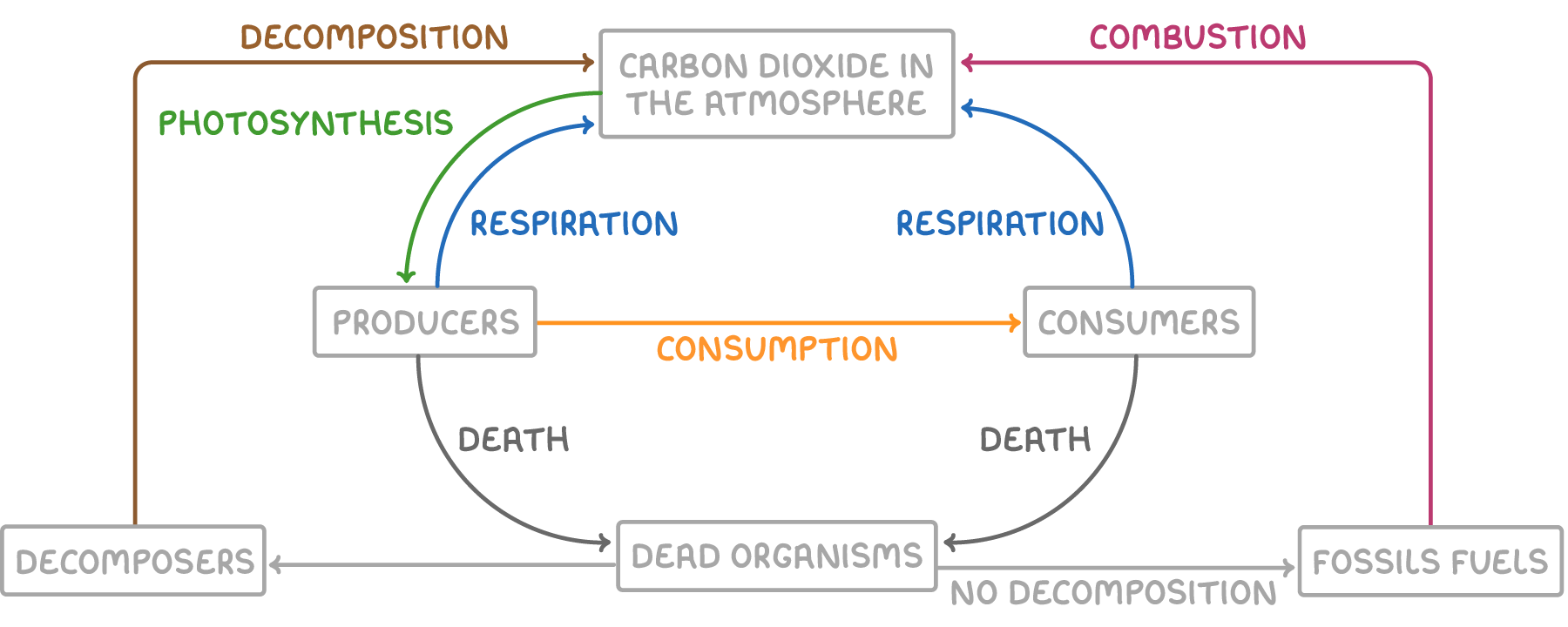Carbon Cycle
This lesson covers:
- Why living organisms need carbon
- The processes involved in the carbon cycle
- Daily, seasonal, and annual fluctuations in atmospheric carbon dioxide levels
An overview of the carbon cycle
Carbon is found in all organic molecules, including fats, carbohydrates, and proteins. It is a fundamental component of almost all major molecules found in living organisms.
The carbon cycle demonstrates the continuous movement of carbon between the biotic (living) and abiotic (non-living) components of the environment.

There are several key processes involved in the carbon cycle:
- Photosynthesis - Producers, like plants, absorb CO2 from the atmosphere and convert it into organic molecules.
- Consumption - Carbon is passed through food chains as organisms consume other organisms.
- Respiration - Organisms use oxygen and carbohydrates to release energy, releasing CO2 back into the atmosphere.
- Decomposition - Dead organic matter is broken down by microorganisms, which releases CO2 into the environment.
- Formation of fossil fuels - Carbon, stored in dead organic matter that does not decompose due to high temperature and pressure, is transformed over millions of years into fossil fuels, including coal and oil.
- Combustion - The burning of fossil fuels reacts stored carbon with oxygen, releasing CO2 into the atmosphere.
- Weathering - Carbon stored in sedimentary rocks is released back into the environment through weathering processes.
- Volcanic activity - Tectonic plate movements can lead to the release of CO2 from volcanic eruptions.
Fluctuations in atmospheric carbon dioxide
Atmospheric CO2 levels fluctuate on a daily, seasonal, and annual basis, mainly due to variations in photosynthesis and respiration rates.
Daily fluctuations in atmospheric CO2:
- Respiration occurs continuously throughout the day and night, releasing CO2 into the atmosphere.
- Photosynthesis only occurs during daylight, removing CO2 from the atmosphere and reducing local atmospheric CO2 levels during the daylight hours.
Seasonal fluctuations in atmospheric CO2:
- During the summer, long daylight hours and warm temperatures increase photosynthesis rates, absorbing more CO2 and reducing local atmospheric CO2 levels.
- During winter, reduced daylight hours and colder temperatures decrease photosynthesis rates and resulting in higher local atmospheric CO2 levels.
Annual fluctuations in atmospheric CO2:
- Annually, greenhouse gas emissions, including those of CO2, have been increasing.
- Increased deforestation removes photosynthesising biomass, lowering the capacity to remove CO2 from the atmosphere.
- Deforestation often involves burning the biomass of trees, which releases additional CO2 into the atmosphere.
- The rising concentration of CO2 in the atmosphere accelerates global warming.
- Global warming decreases the solubility of carbon dioxide in oceans as less gas can dissolve in warmer water, leading to more CO2 being released into the atmosphere.